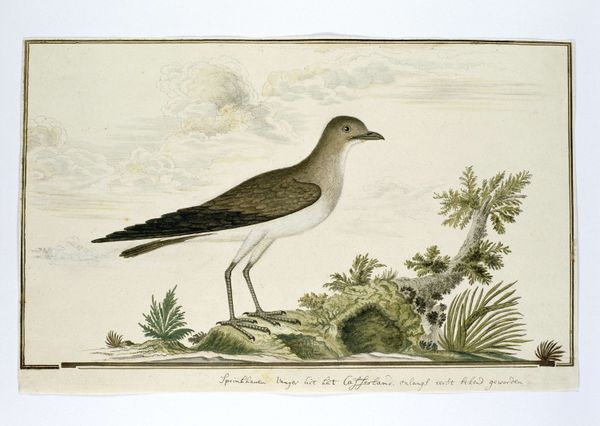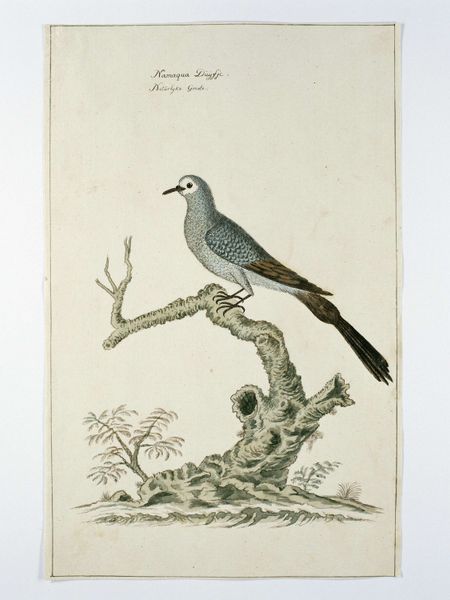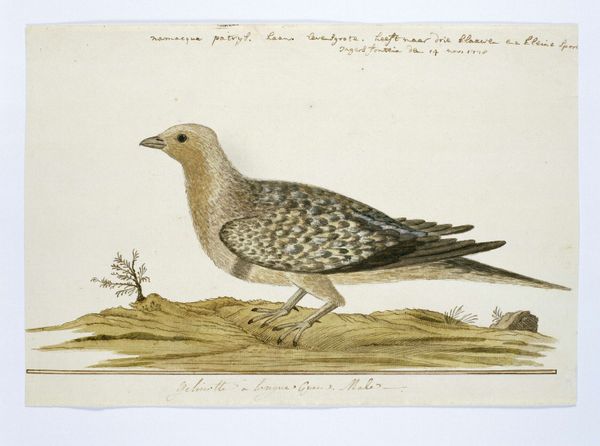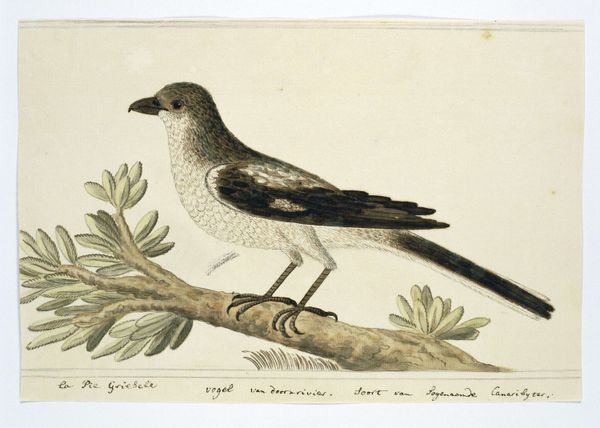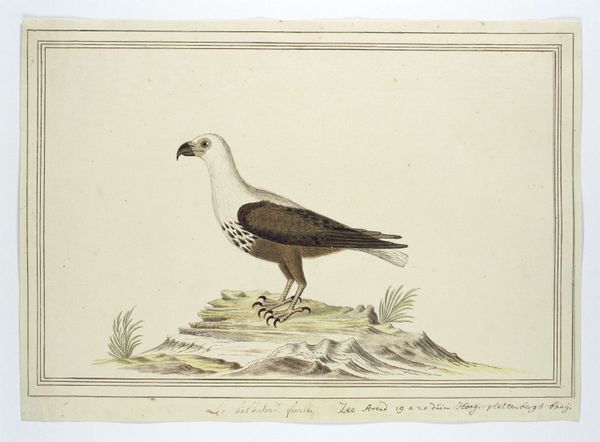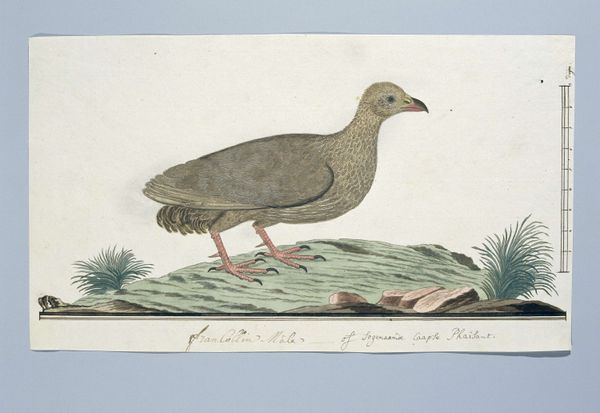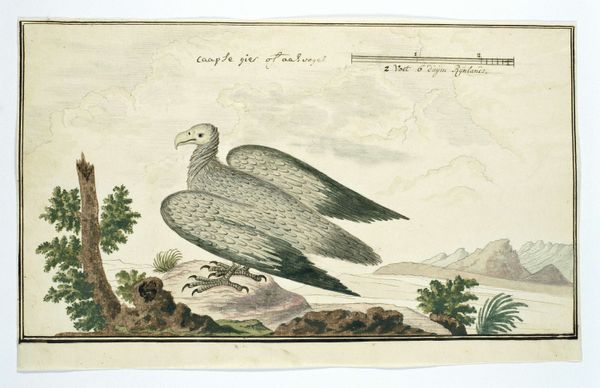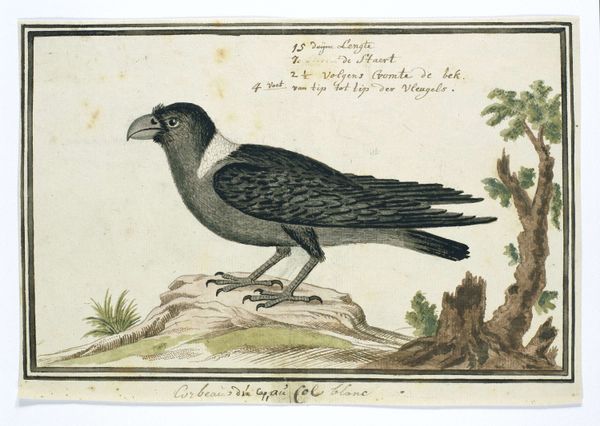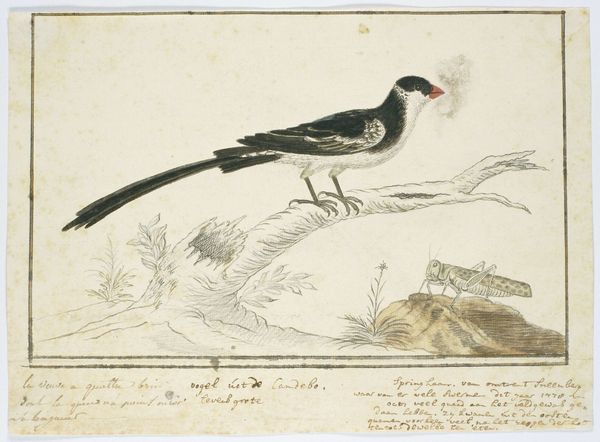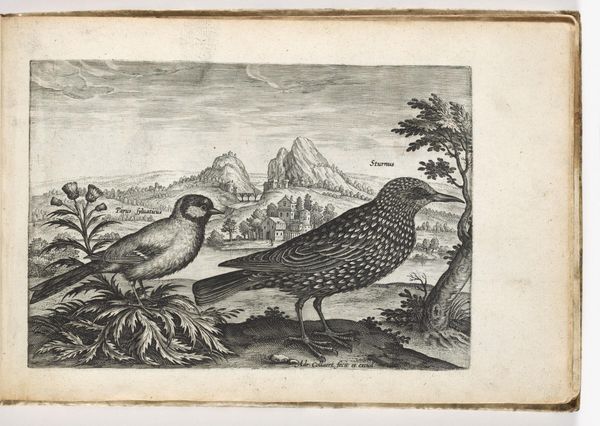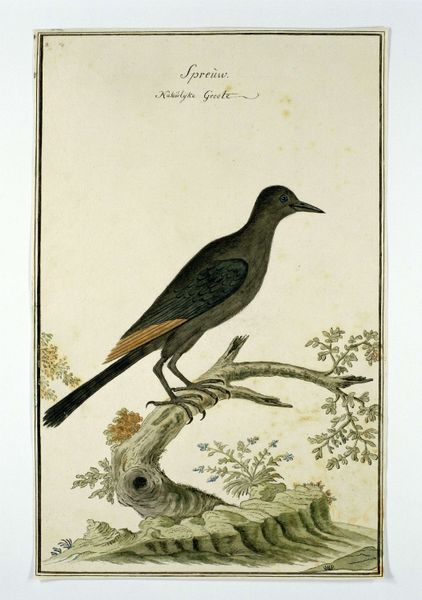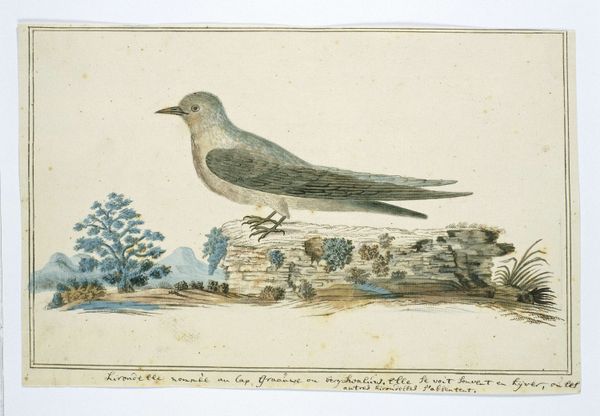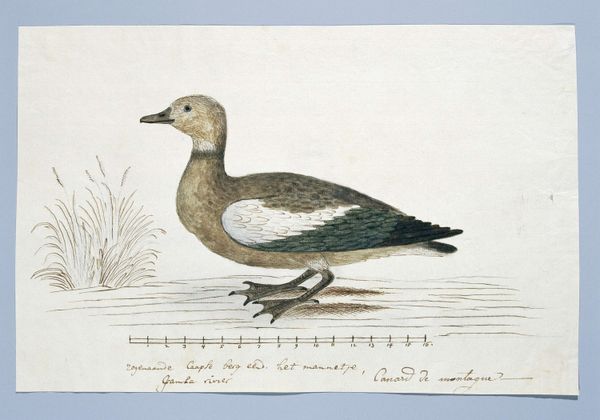
drawing, paper, watercolor
#
portrait
#
drawing
#
landscape
#
paper
#
watercolor
#
coloured pencil
#
watercolour illustration
#
realism
Dimensions: height 660 mm, width 480 mm, height 256 mm, width 405 mm, height 243 mm, width 397 mm
Copyright: Rijks Museum: Open Domain
Curator: Robert Jacob Gordon likely rendered this watercolor drawing of a Creatophora cinerea, a wattled starling, sometime between 1777 and 1786. It’s quite lovely in its straightforward presentation, wouldn’t you agree? Editor: Yes, a rather delicate affair. It strikes me as possessing the muted dignity of old botanical prints—that parchment paper and restrained palette really give it a feel of being a window into another era. Curator: Indeed! Gordon, a Dutch explorer and military officer, had a keen interest in natural history. This work speaks to the tradition of scientific illustration—the details of the bird's plumage are carefully rendered, and even the branch seems to serve as a natural pedestal. Editor: The materiality intrigues me—the paper itself, likely handmade, shows a subtle texture that catches the light. And then there’s the watercolor. The way the color saturates the fibers suggests a slower, more deliberate process than, say, a mass-produced print. Curator: I get a sense that Gordon isn't just depicting the bird; there's an element of reverence, an appreciation for its place within the broader ecosystem of the Cape. His approach marries science with a subtle artistic expression. Editor: But let's not forget that Gordon was a product of his time—a period deeply entangled with colonialism. His journey wasn't simply a noble exploration, it facilitated resource extraction and cultural appropriation. Even in this seemingly harmless depiction of a starling, we can detect signs of imperial ideology being advanced. Curator: That is certainly one way to interpret it! To me, it’s still somewhat magical, despite all of this. To pause, and try to capture a glimpse of the natural world around us. Even if flawed by the perspective and attitudes of the era in which it was made. Editor: Fair enough! It’s hard to separate intention from result—perhaps this work serves as a reminder of our evolving relationship with nature, and how our representations inevitably reflect societal shifts. Curator: Ultimately, looking at the lovely Creatophora cinerea, I find myself wondering about the hidden dimensions, the way the colors have aged, and the light they’ve absorbed throughout time. It is now time for me to tweet about bird watching and social media's nature depiction... Editor: I’m going to see if our conservation department has any similar paper in its archives, as seeing a material context for artworks helps enrich understanding a lot! Thanks for walking me through your interpretation!
Comments
No comments
Be the first to comment and join the conversation on the ultimate creative platform.
